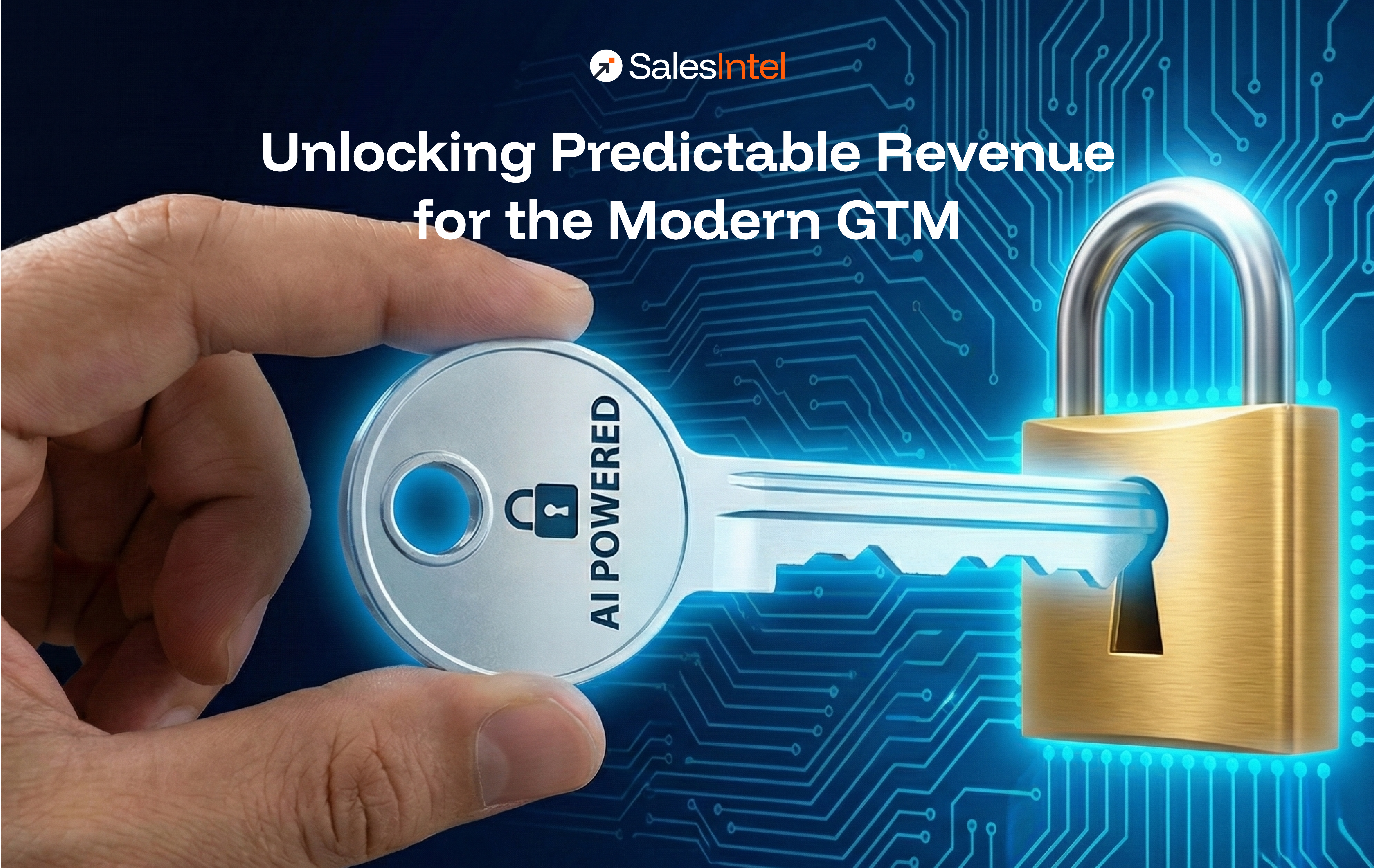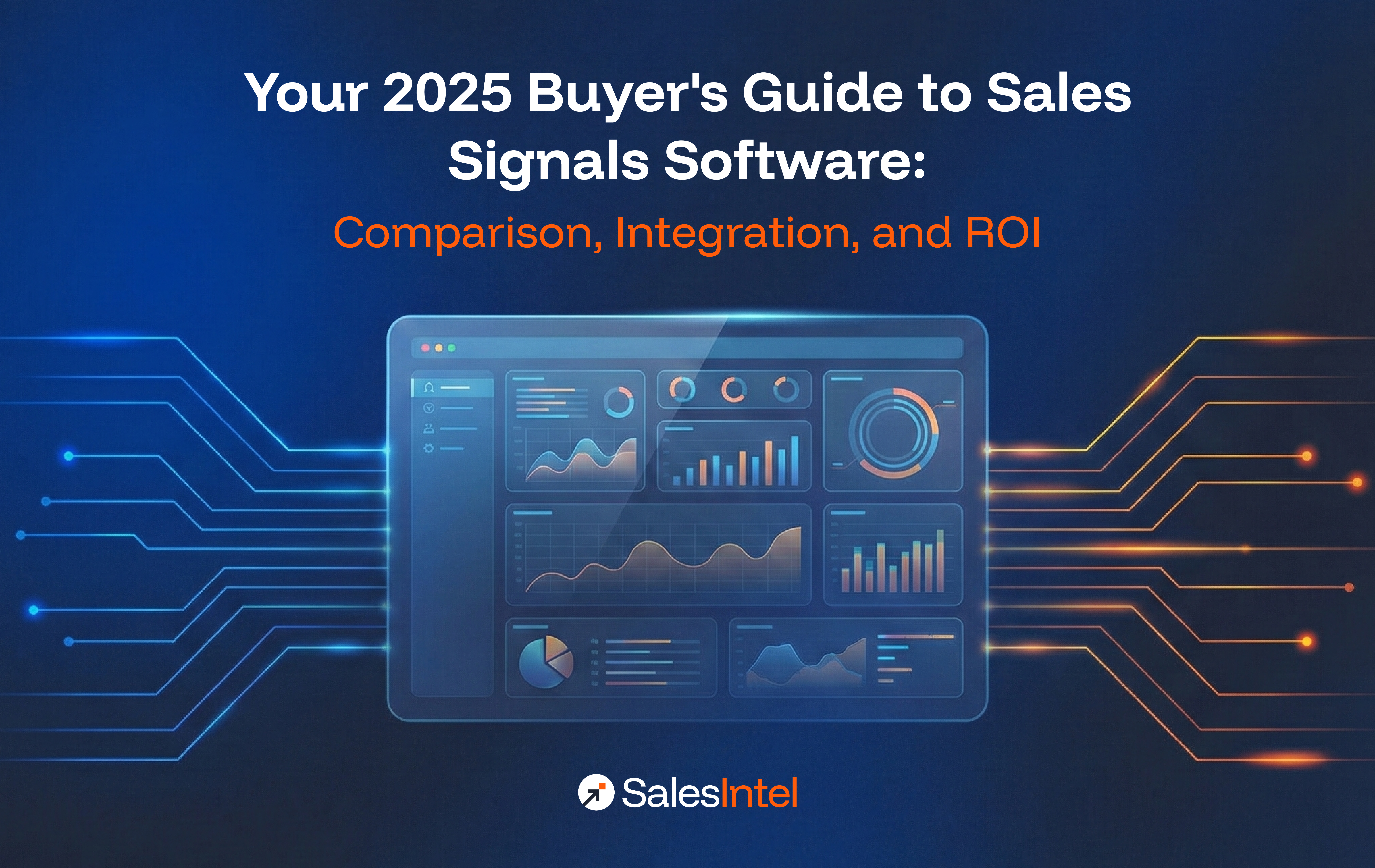Account-based marketing (ABM) has evolved significantly in recent years, and intent data has emerged as a powerful tool for B2B marketers to take their ABM strategies to the next level. Intent data provides valuable insights into the buying behavior and interests of potential customers, enabling marketers to identify and target high-potential accounts more effectively. In this blog, we’ll explore seven high-impact intent data strategies that can supercharge your ABM efforts and drive tangible results.
While ABM is highly effective, its success hinges on the ability to identify and prioritize the right accounts. This is where intent data plays a crucial role. Intent data consists of signals that indicate a potential customer’s interest or intent to buy a product or service. It is derived from analyzing online behaviors such as content consumption, website visits, and search activity.
Why Is Intent Data for ABM Crucial
Account-based marketing (ABM) is a powerful strategy, but it may not always deliver the results marketers hope for on its own. Many see ABM as a direct alternative to traditional demand generation efforts, but in reality, it works best when these strategies are combined. Traditional tactics provide the broad awareness and engagement needed to “warm up” a larger audience, while ABM zeroes in on high-value accounts. For ABM to truly thrive, it requires a focused strategy and the precision to engage the right accounts at the right time. This is where intent data for ABM becomes indispensable.
Intent data provides the insight needed to fine-tune your ABM efforts, enabling you to target accounts that are actively in the market for your solution. By understanding which prospects are researching products or services similar to yours, you can prioritize your resources on those with the highest likelihood of conversion. This synergy allows ABM to move from a broad, generic approach to a highly targeted, data-driven strategy that maximizes ROI and minimizes wasted efforts. In essence, with intent data, ABM can stay strong; with it, however, ABM strategies are supercharged to drive meaningful, measurable results.
7 High-Impact Intent Data Strategies That Drive Results
Prioritize High-Intent Accounts
Intent data for ABM (Account-Based Marketing) is a game-changer when it comes to identifying and prioritizing high-intent accounts. Intent data for ABM provides insights into which companies actively research or show interest in your products or services by analyzing their online behavior, such as content consumption, website visits, and search activity. By leveraging intent data, you can pinpoint accounts showing strong buying signals and prioritize them in your ABM campaigns. This ensures that your marketing and sales efforts are focused on accounts with the highest potential for conversion.
To segment these high-intent accounts effectively, use a tiered approach based on intent strength, firmographic data (e.g., industry, company size), and historical engagement. For instance, Tier 1 could include accounts showing the highest intent signals combined with an ideal customer profile (ICP) match. This segmentation enables more personalized and targeted engagement strategies, improving the likelihood of conversion.
Tools and platforms like SalesIntel and Bombora specialize in gathering and analyzing intent data, providing real-time insights into which accounts are in-market. These tools integrate with CRM and marketing automation systems, helping you automate and scale your ABM efforts. By focusing on high-intent accounts, marketers can maximize ROI, shorten sales cycles, and drive more impactful ABM campaigns.
Align Sales and Marketing Teams with Real-Time Insights
Aligning sales and marketing teams around real-time insights from intent data is crucial for a unified and effective ABM strategy. Intent data for ABM offers valuable information about where an account is in the buying journey, enabling both teams to work together seamlessly to engage prospects with the right messaging at the right time. When sales and marketing are aligned using intent data, both teams are on the same page regarding which accounts to target, what pain points to address, and when to engage.
To share intent data insights with sales teams, consider using shared dashboards or automated alerts that notify sales reps when an account shows a surge in intent. This enables timely follow-ups and more relevant conversations, increasing the chances of conversion. Techniques like Sales and Marketing “Stand-Up” meetings or “War Rooms” can also be effective for real-time alignment and strategy adjustments based on intent data.
Create Hyper-Personalized Content for Key Accounts
Intent data empowers marketers to create hyper-personalized content that speaks directly to the specific needs and pain points of target accounts. By analyzing intent signals—such as the topics and keywords that potential customers are searching for, and the content they are consuming—marketers can understand what is most relevant to their prospects at any given moment. This allows them to craft tailored messaging that resonates deeply with each account’s unique journey and stage in the buying process.
To leverage ABM intent data for creating personalized content, focus on developing dynamic landing pages, customized emails, and targeted ads that reflect the specific interests of high-intent accounts. For example, if intent data indicates that a particular account is interested in “data security solutions,” you can create content that directly addresses their concerns, such as a whitepaper or case study on data security best practices. Personalization also extends to email outreach, where customized subject lines and content can significantly increase open rates and engagement.
Optimize Ad Spend with Intent-Driven Targeting
Intent data for ABM allows marketers to refine digital ad targeting by focusing on accounts that are actively showing interest in specific products or services. This data-driven approach reduces ad spend waste by ensuring marketing budgets are allocated to reaching accounts most likely to engage and convert. Instead of broadly targeting a large audience, intent-driven targeting leverages insights about what accounts are currently researching or interested in, allowing for highly relevant ads to be displayed to these potential buyers. This results in a more efficient use of ad spend and higher conversion rates, as ads are only shown to those with demonstrated buying intent.
Programmatic advertising and retargeting are powerful tactics when combined with intent data. By using programmatic ad platforms, marketers can automate the delivery of highly targeted ads to the right accounts based on their intent signals. Retargeting allows brands to stay top-of-mind for these high-intent accounts by serving ads to users who have already interacted with their website or content. This combination ensures that marketing dollars are spent on reaching the right people at the right time, maximizing the impact of digital advertising efforts within an ABM framework.
Enhance Account Nurturing with Multi-Channel Engagement
Intent data, when combined with multi-channel marketing strategies, can significantly deepen account engagement by ensuring that each interaction is relevant and timely. By understanding where a target account is in its buying journey, marketers can use intent data to tailor their engagement across various channels like email, social media, webinars, and direct mail. Each channel can serve a different purpose—emails can provide educational content, social media can drive conversation, webinars can deliver in-depth insights, and direct mail can offer personalized touches that stand out.
To build an effective account nurturing program leveraging intent data for ABM, marketers should create a coordinated, multi-channel strategy that evolves with the account’s intent signals. For example, if an account shows intent for a specific topic, an automated workflow could trigger an email sequence, personalized ads, and an invitation to a webinar on that topic. This multi-channel engagement, fueled by real-time intent data, ensures that accounts are consistently nurtured with content that meets their current needs and interests, leading to higher engagement and better conversion rates.
Improve ABM Campaign Timing with Intent Signals
Intent data is invaluable for improving the timing of ABM campaigns by indicating the most opportune moments to engage with target accounts. Understanding when an account is actively researching or showing increased interest in your solutions allows marketers to strike when the iron is hot. By identifying these intent signals, teams can engage accounts precisely when they are more likely to be receptive to outreach, increasing the chances of securing a meeting or progressing through the sales funnel.
Perfect timing can have a significant impact on engagement and conversion rates. When campaigns are aligned with real-time intent data, marketers can avoid reaching out when the account is not ready and instead focus on the periods when interest is at its peak. This leads to more productive conversations, a higher likelihood of conversion, and ultimately, a more efficient ABM strategy that capitalizes on every opportunity.
Measure and Optimize ABM Performance Using Intent Data Analytics
Tracking the success of ABM efforts is critical for continuous improvement, and intent data analytics provides a robust foundation for this process. By monitoring key metrics such as engagement levels, content consumption, and pipeline progression linked to intent signals, marketers can gauge how well their ABM campaigns are performing. Intent data enhances this process by offering deeper insights into which accounts are showing interest, which content resonates, and which outreach strategies are effective.
Using insights from intent data, marketers can refine their ABM strategies to focus on what works best. If analytics reveal that certain accounts are highly engaged with specific types of content or topics, the ABM strategy can be adjusted to emphasize those areas. This iterative approach, driven by data, ensures that ABM efforts are always evolving and improving, leading to more effective targeting, personalized messaging, and better overall results.
Ahead of competitors and engage prospects when they’re most receptive.
From Insights to Impact
Intent data has become a critical component of successful ABM strategies. By leveraging intent data, B2B marketers can identify high-potential accounts, personalize content and messaging, align sales and marketing efforts, optimize ad spend, enhance retargeting, personalize outreach, and continuously adjust their ABM strategies based on real-time insights. By implementing these seven high-impact intent data strategies, you can supercharge your ABM efforts and drive meaningful results that impact your bottom line.
Personalization and relevance are key to standing out, ABM intent data provides the intelligence needed to make every interaction count. Start incorporating these strategies into your ABM playbook today and see the difference intent data can make in driving engagement, conversions, and revenue growth. Solutions like SalesIntel offer not only intent data for ABM but also Predictive Intel to help you better understand your target accounts’ buying behaviors, ensuring that your marketing and sales teams are always one step ahead of your competitors.
By integrating ABM enablement tools, you can optimize your ABM strategy to focus on the right accounts at the right time, increasing the likelihood of success.




